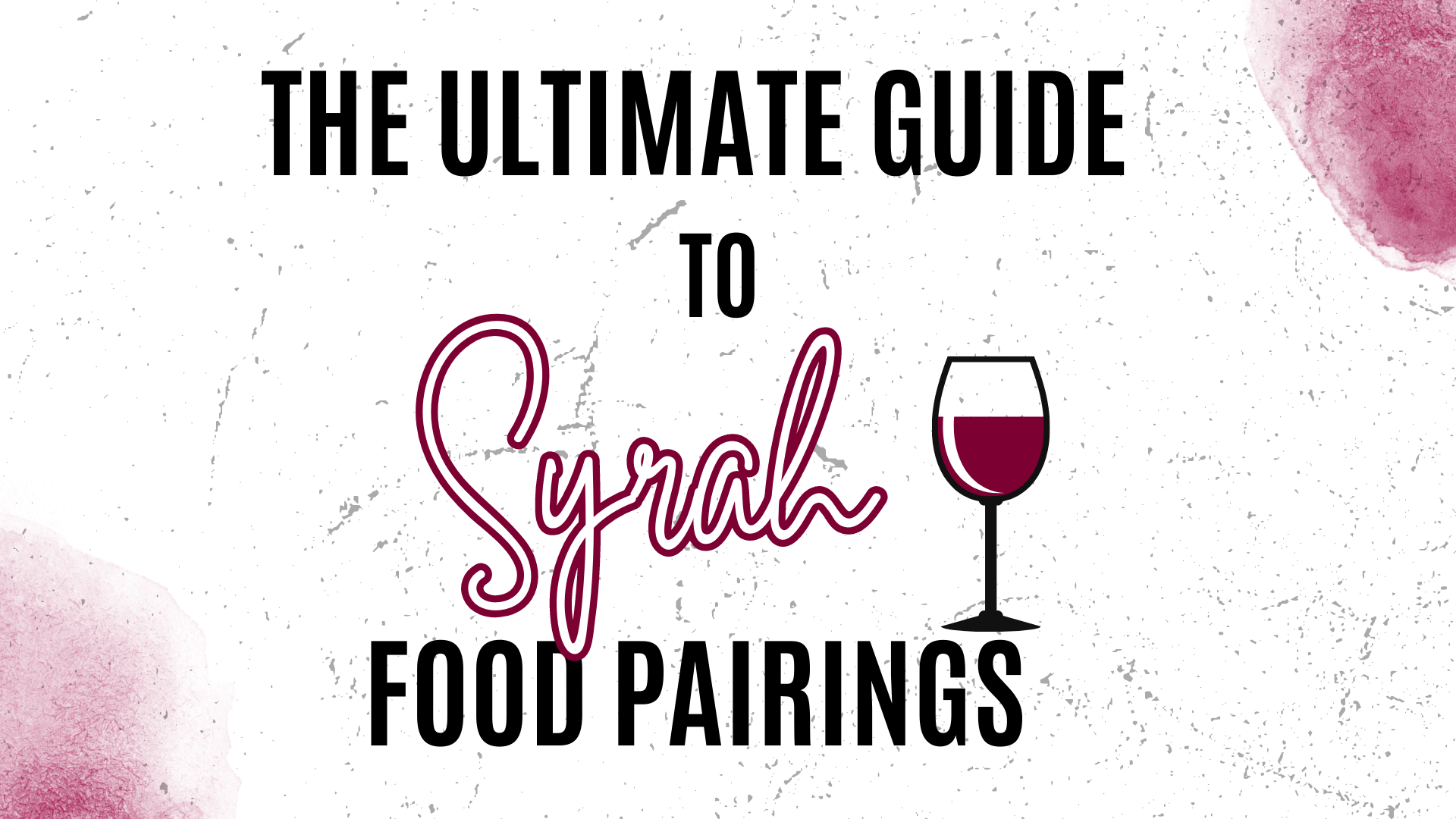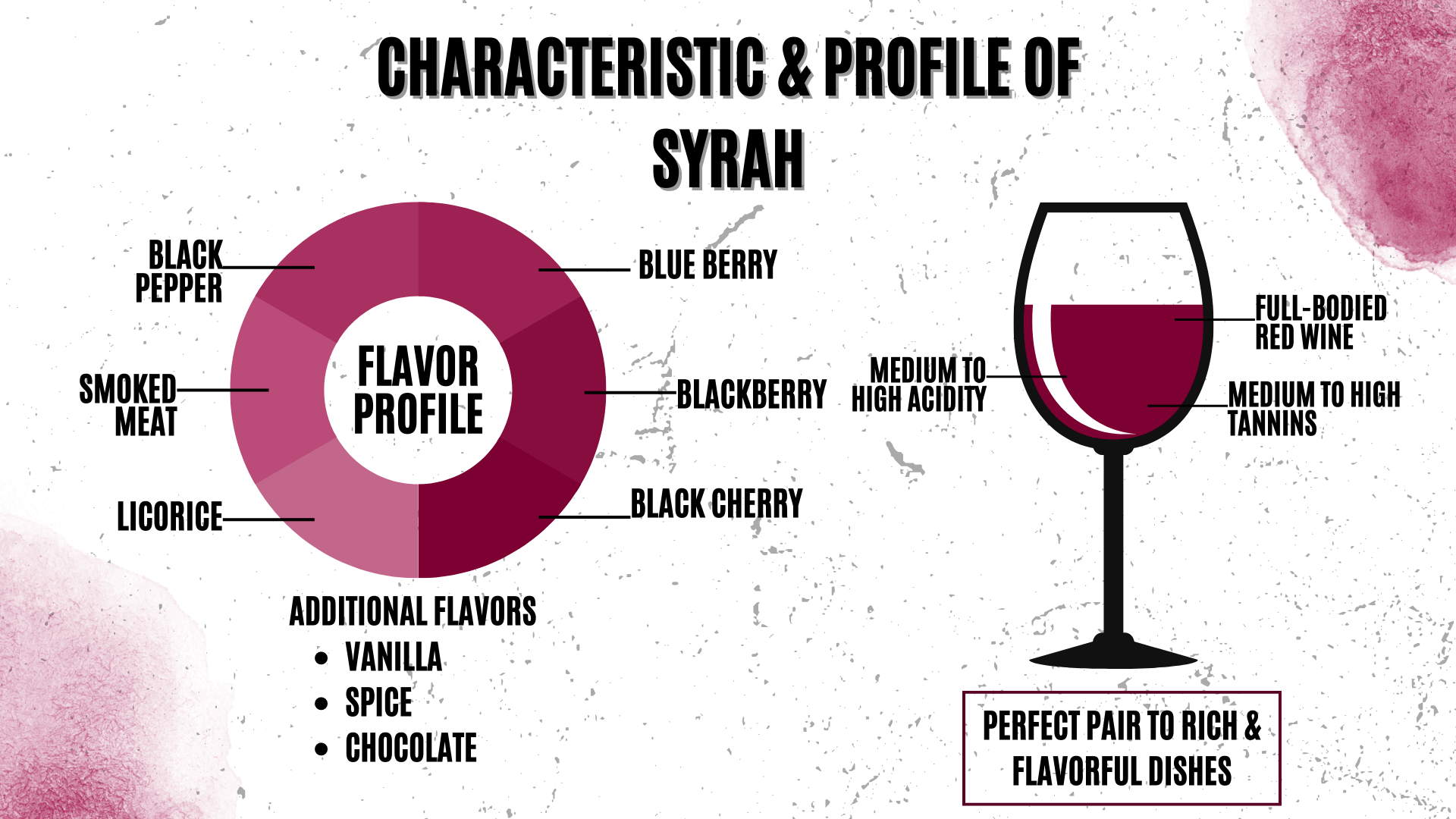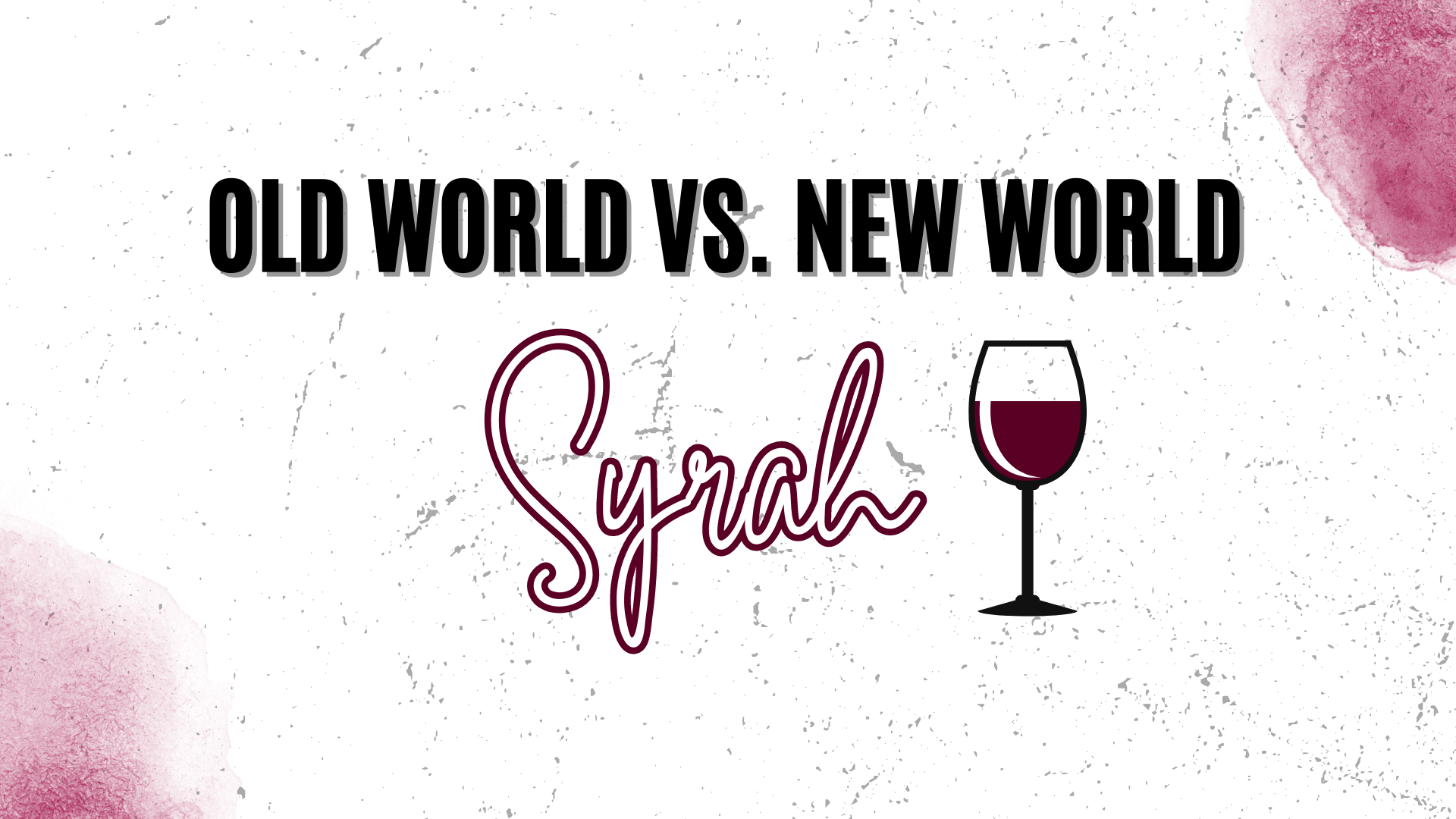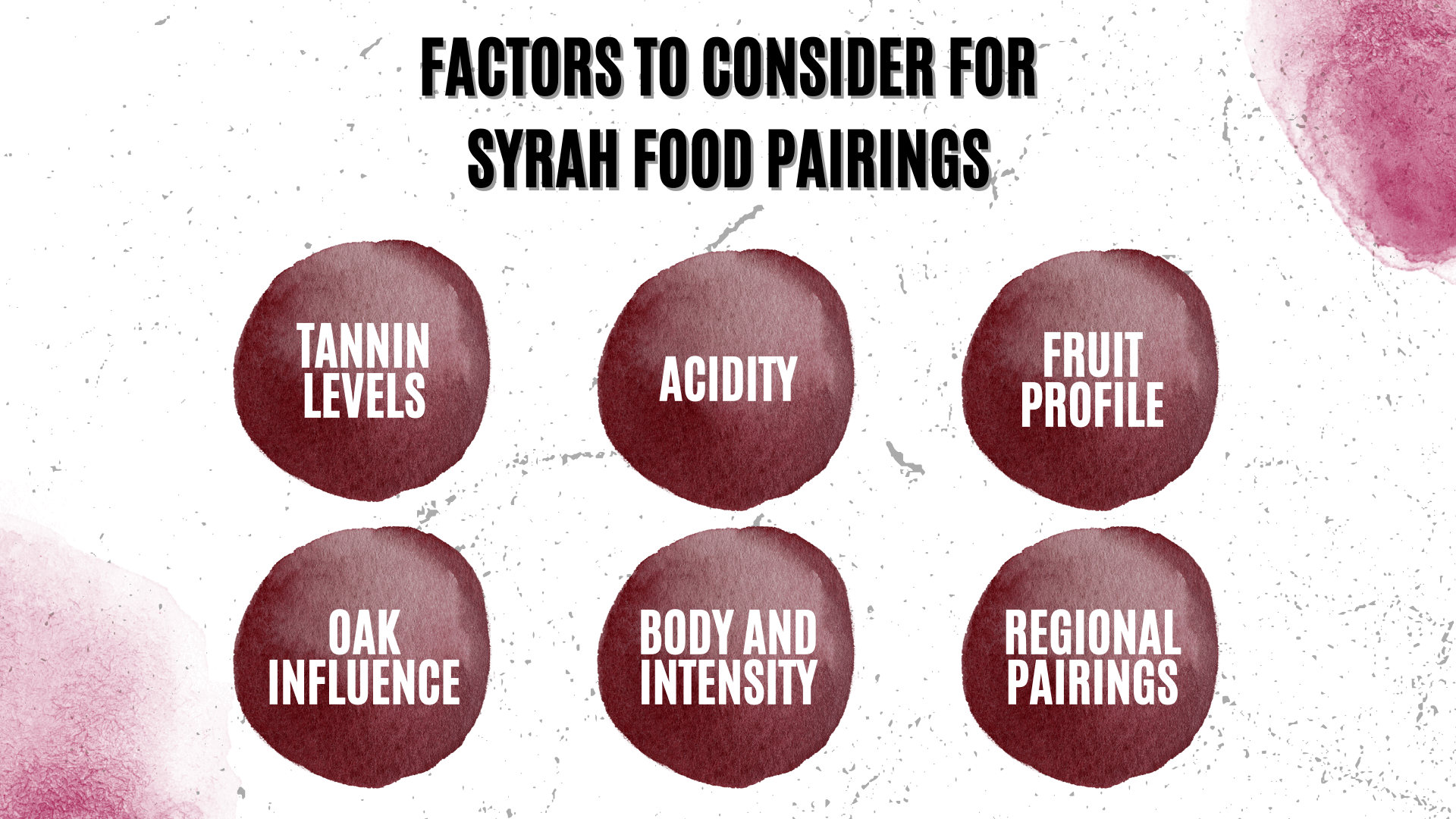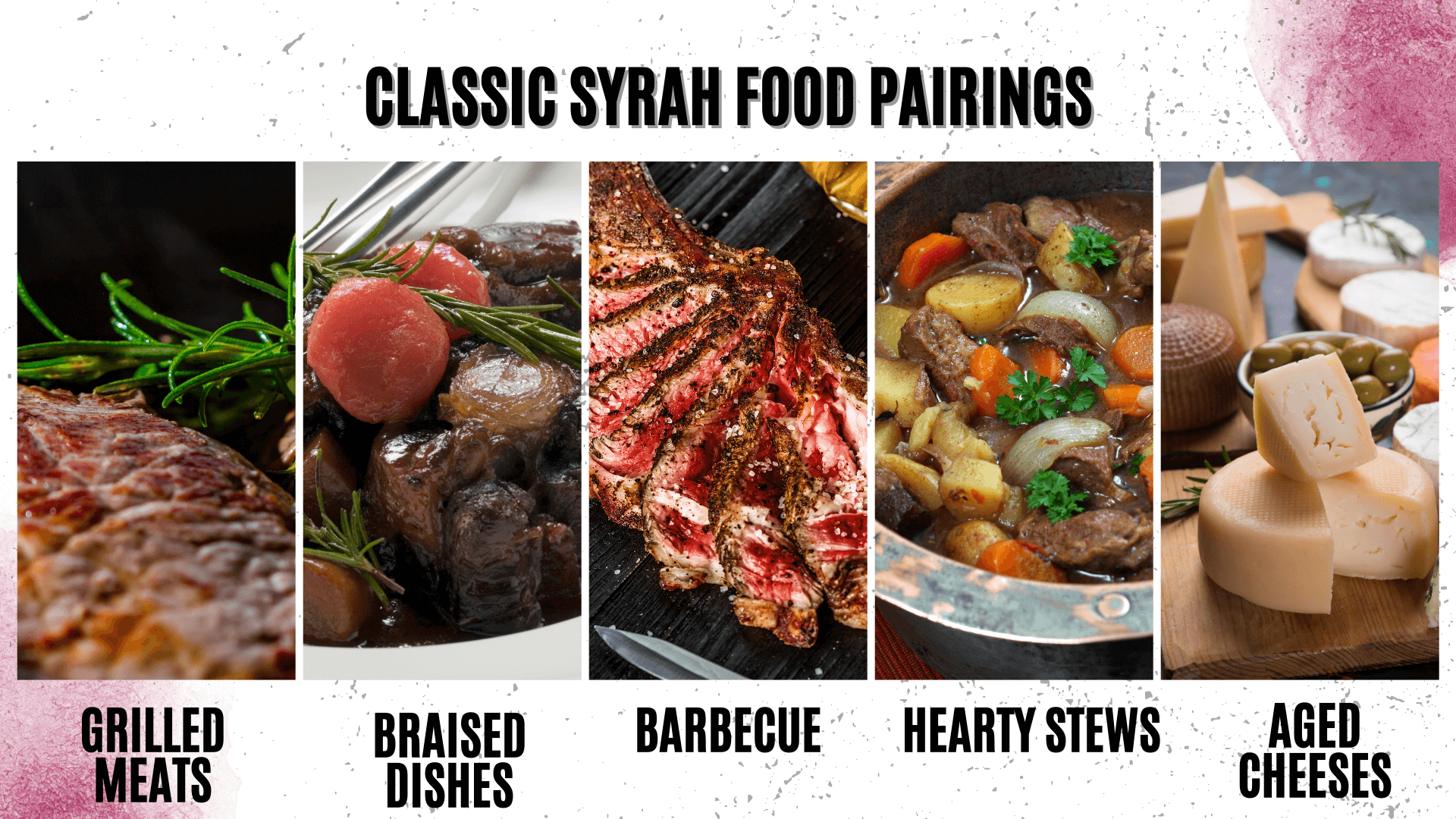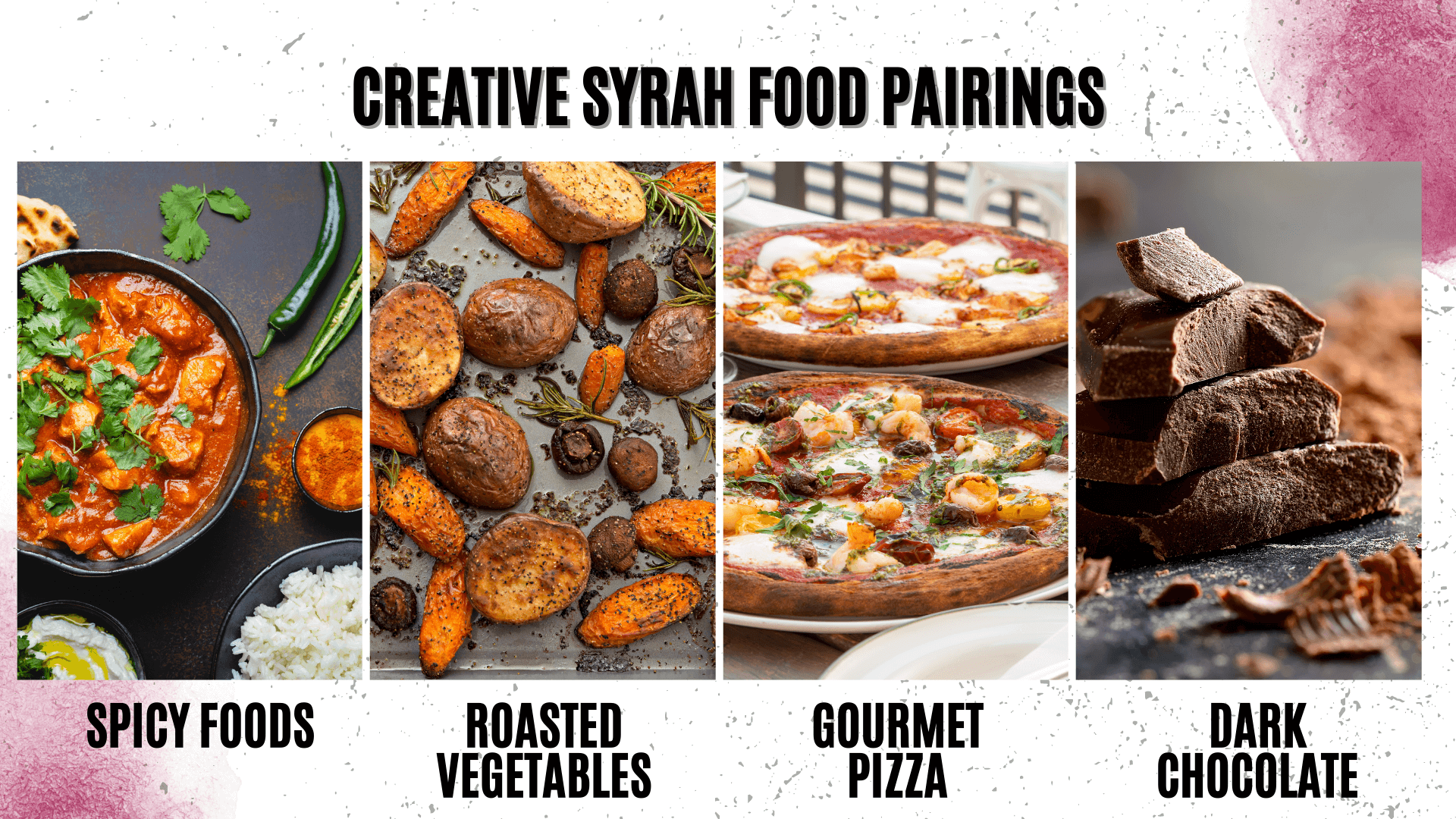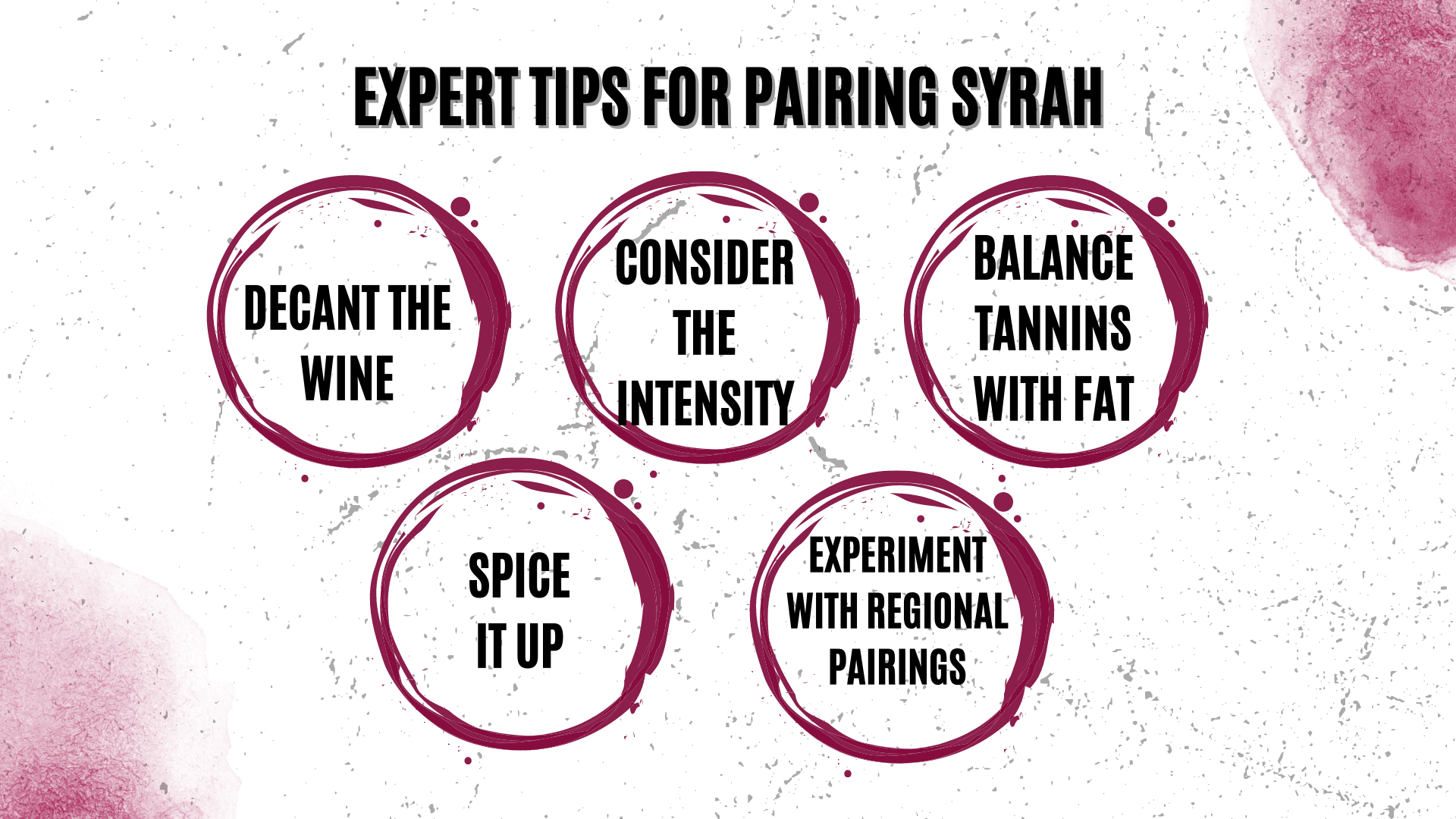Introduction
Syrah, also known as Shiraz in some regions, is a powerful and full-bodied red wine known for its rich fruit flavors, spicy undertones, and velvety tannins. With its origins in the Rhône Valley of France, Syrah has gained global recognition and is now cultivated in wine-producing regions across the world, including Australia, South Africa, and California. In this comprehensive guide, we’ll delve into the history, characteristics, and various styles of Syrah, as well as provide expert tips and pairing suggestions to create the perfect dining experience.
I. The History of Syrah
Syrah is believed to have originated in the Rhône Valley in France, where it has been cultivated for centuries. The grape has since spread to other regions, gaining particular prominence in Australia, where it is known as Shiraz and has become the country’s flagship red grape variety.
II. Wine Profile
Syrah is a full-bodied red wine with medium to high acidity and moderate to high tannins. Its flavor profile often features dark fruit flavors such as blackberry, blueberry, and black cherry, accompanied by secondary notes of black pepper, licorice, and smoked meat. Syrah is often aged in oak, which can impart flavors of vanilla, spice, and chocolate.
III. Characteristics of Syrah
Syrah is known for its deep, dark color and intense flavors. Common tasting notes include dark fruits, black pepper, and earthy undertones. The wine’s tannin structure and acidity provide balance and depth, while its full-bodied nature allows it to pair well with robust, flavorful dishes.
IV. Old World vs. New World Syrah
Old World Syrahs, primarily from the Rhône Valley, tend to be more restrained and elegant, with higher acidity and more earthy, savory flavors. New World Syrahs, such as those from Australia, California, and South Africa, often exhibit riper fruit flavors, higher alcohol content, and a richer, more opulent texture.
V. Factors to Consider for Syrah Food Pairings
Tannin levels: Syrah is known for its moderate to high tannin content, which can create a drying sensation in the mouth. To counteract this, pair the wine with dishes that have rich, fatty components, like marbled meats, creamy sauces, or dishes with butter.
Acidity: Acidity in wine can help to balance the flavors of a dish and cleanse the palate. Syrah typically has medium to high acidity, making it suitable for pairing with a variety of foods, particularly those with some acidity of their own, like tomato-based dishes.
Fruit profile: The fruit flavors in Syrah can range from dark fruits like blackberries and blueberries to ripe, jammy flavors. Consider the wine’s fruit profile when selecting a dish, opting for complementary flavors or contrasts that will enhance the pairing.
Oak influence: Many Syrahs are aged in oak barrels, which can impart flavors of vanilla, spice, and smoke. Consider dishes that will complement or contrast these flavors, like grilled meats or dishes with earthy or spicy components.
Body and intensity: Syrah is typically a full-bodied and intense wine, which means it can easily overpower delicate dishes. Choose robust, flavorful dishes that can stand up to the wine’s intensity.
Regional pairings: Pairing a wine with food from the same region can often yield successful results, as the flavors and culinary traditions have evolved together. For example, a Rhône Valley Syrah might pair well with a traditional French dish, while an Australian Shiraz could complement a bold, spicy dish.
VI. Classic Syrah Food Pairings
Grilled meats: Syrah’s bold flavors and tannin structure make it an excellent choice for pairing with grilled meats like steak, lamb, or pork. The wine’s fruit and spice notes complement the smoky, charred flavors of the meat, creating a harmonious balance.
Braised dishes: Slow-cooked, tender braised dishes, such as beef short ribs or osso buco, are a perfect match for Syrah. The wine’s tannins and acidity can cut through the richness of the dish, while its intense flavors enhance the savory, umami character.
Barbecue: The smoky, spicy flavors of barbecue, like smoked brisket or pulled pork, can be a fantastic pairing for Syrah. The wine’s fruit and spice notes can stand up to the bold, complex flavors of the barbecue sauce and smoked meats.
Hearty stews: Syrah can hold its own against rich, flavorful stews like beef bourguignon, lamb shanks, or a hearty vegetable stew. The wine’s full-bodied nature and robust flavors can complement and enhance the deep, savory flavors of the stew.
Aged cheeses: Syrah pairs well with aged cheeses like cheddar, gouda, or Manchego. The wine’s tannins can cut through the fat in the cheese, while its robust flavors complement the cheese’s complexity.
VII. Creative Syrah Food Pairings
Spicy dishes: Syrah can handle the heat and bold flavors of spicy dishes like Indian curry, Mexican mole, or Szechuan stir-fry. The wine’s dark fruit flavors and peppery notes can complement the spices and provide a pleasant counterbalance.
Roasted vegetables: Syrah’s earthy undertones and bold flavors can pair well with roasted vegetables like eggplant, mushrooms, or root vegetables. The wine’s depth can complement the caramelized, savory flavors of the vegetables.
Gourmet pizza: A well-crafted pizza with premium ingredients like prosciutto, goat cheese, or roasted garlic can be a delightful partner for Syrah. The wine’s acidity can cut through the richness of the cheese and toppings, while its fruit and spice flavors can enhance the dish’s complexity.
Dark chocolate: While not a conventional pairing, Syrah can work surprisingly well with dark chocolate. The wine’s dark fruit flavors and velvety tannins can complement the chocolate’s bitterness and richness, creating a decadent and satisfying combination.
VIII. Expert Tips for Pairing Syrah
Decant Syrah to allow the wine to breathe and open up, enhancing its flavors and softening the tannins.
Consider the intensity: When pairing Syrah with food, it’s crucial to match the intensity of the wine with the intensity of the dish. Bold, flavorful dishes work best with this full-bodied wine, as they can stand up to its strong flavors without being overwhelmed.
Balance tannins with fat: Syrah’s tannins can be softened by dishes with high fat content, such as red meat, rich sauces, or creamy cheeses. This helps create a harmonious balance between the wine and the food.
Spice it up: Syrah’s dark fruit flavors and peppery notes can complement spicy dishes, such as grilled meats with spicy rubs or sauces. The wine’s bold flavor profile can handle the heat and provide a pleasant counterbalance.
Experiment with regional pairings: When in doubt, consider pairing Syrah with dishes from regions where the wine is produced, such as the Rhône Valley, Australia, or California. Regional pairings often share complementary flavors and can lead to successful matches.
Conclusion
Syrah’s intense flavors, full body, and velvety tannins make it a versatile wine for food pairings. From classic grilled meats and braised dishes to more adventurous pairings with spicy foods anddark chocolate, the possibilities are nearly endless. By understanding the characteristics and styles of Syrah, as well as following expert tips, you can elevate your dining experience and create unforgettable pairings that showcase this remarkable wine.
Frequently Asked Questions
While Syrah is generally considered a full-bodied wine, there is some variation depending on factors such as region, climate, and winemaking techniques. However, most Syrahs will have a full-bodied character.
Although Syrah is not a traditional pairing for seafood, there are exceptions. For example, a rich, hearty seafood stew or a bold, spiced fish dish may hold up well against the intense flavors of Syrah.
Syrah is best enjoyed at a slightly cooler temperature than room temperature, typically around 60-65°F (16-18°C). This allows the wine’s flavors and aromas to shine without being overwhelmed by the alcohol content.
Once opened, a bottle of Syrah can be stored for up to 3-5 days if properly resealed and kept in a cool, dark place. Using a vacuum-sealed wine preservation system can extend the wine’s life by a few more days.


